Silent invasion of heavy metals
LEAD
MERCURY
CADMIO
ARSENIC
CHROME
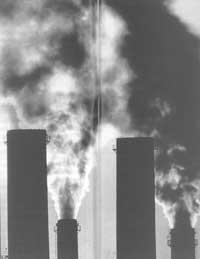
In order for the human being to be aware and concerned about the problems that heavy metal legends cause in the environment, it is necessary to produce badi-rudi ecological catastrophes, disproportionate discharges of mercury or lead, pollution and mass poison. However, venomous releases of Chisso Corporation (1) Union Carbide (2) and Sandoz (3) are not specific cases. Micro-polluting minerals are continually thrown into nature (thousands of tons) and as a trace remain in the atmosphere, the hydrosphere and the lithosphere reaching and damaging the biosphere that form living beings.
The vapors and particles that go to the air fall back to the ground. The rains and rivers that clean the earth carry part of the pollutants towards the sea. In addition, the water that filters in the soil, accumulated with underground water, contaminates the water table. Aquatic microorganisms take them to the biosphere. These living beings are the first link in the food chain, so the contaminants accumulate in the tissues of the following meals.
This biomass is highly harmful to the consumer who is at the end of the chain, that is, to the human being. In addition, once the environment is contaminated, the toxic effects can sometimes last for a long time.
The abundance of emission sources and the low level of heavy metals they present, make it difficult to evaluate the global quantities that humans throw, and compare them with those from natural sources.
However, for a few years scientists have tried to carry out a series of research to elaborate an inventory of the artificial discharges that man sends to the medium.
According to these studies, at present the human being has a great influence on most cycles of heavy metals. The contamination of water resources is important and increases the accumulation of these elements in food. The emission rate per source is calculated based on the concentration of heavy metals in the raw materials, as well as taking into account the technologies used for the production and control systems of the pollution. In fact, the different technological processes of the same industry have a variable pollution potential.
In the case of cement manufacturing, for example. Industrial high temperature combustion processes are used here. The pollution that is generated in metallurgical and steel casting processes usually depends on the equipment used. The concentration of trace elements is not fixed in raw material. The rate of carbon in arsenic can range from 0.34 to 130 micrograms/g.
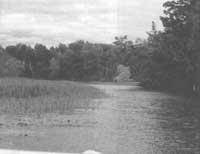
As for the atmosphere, most of the mercury, molybdenum and selenium come from thermal plants such as coal burning, industrial, tertiary or domestic burners. They are also the ones that offer the highest number of arsenals, chromium, manganese, antimony and talio.
In the smoke produced by carbon buds and fuel heaters, the vanadium concentration is high and dispersed by smoke. The cement mills expel a lot of talio, chromium and lead. Also noteworthy are the non-hardware metal industries. They supply arsenic, cadmium, copper and zinc. Also important is the combustion of fuels, especially by the lead it releases. Chromium and manganese mainly come from siderurgy.
The state of aquatic ecosystems is no better than that of the atmosphere. Both maritime and continental, these ecosystems support very agile industrial spills. Water residues from coal combustion equipment mainly transport arsenic, mercury, and selenium. Metallurgical foundries are cadmium, nickel, lead and selenium. The spills of the steel industries carry molybdenum chromium, antimony and zinc. Arsenic, manganese and lead urban sewer sludge. As a consequence of all this (and this occurs especially in the case of lead), the atmosphere transports much of the heavy metals to the aquatic ecosystem.
The pollution of marine waters occurs mainly on the coast. Keep in mind that rivers, dumping of factories and sewers arrive at the coast. According to UNESCO, there will soon be no microminerals in water. The reason is very simple: the transfer of heavy metals through sediments is very fast. Living organisms metabolize part of the sediments and circulate them in the food chains, extending their toxicity.
The earth also suffers toxic effects. The pollution is due to the burning ashes of coal and the manufactured products used. The latter, for their part, send directly to nature 1-5% of the world production of manganese, molybdenum, nickel, antimony and vanadium.
Other sources participate in this complex distribution. Urban waste provides an important supply of copper, mercury, lead and zinc. Agricultural and livestock residues, residues of agricultural products, chemical fertilizers and pesticides, cultivated lands pollute slowly but steadily.
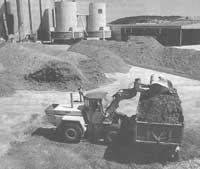
The pollution accumulates in the terrestrial surface at the height of the vultures. Pesticides offer copper, arsenic, or lead. The 80%-90% of the arsenic produced annually moves to the ground.
Earth is not a bottomless trash bin. Limited storage capacity. Accordingly, it seems that Japan and some European lands have already reached levels of saturation and need a deep cleaning.
The most critical levels of pollution are located in the following media:
- near the mines
- environment to the networks of roads
- fields with fertilizer
- industrial polygons
- in lands with discharges
The human influence on the biogenetic and chemical cycles of heavy metals is very important. Although volcanic eruptions, meteorites and the modification of archets by erosion are a natural source of heavy metal launching, the launch of elements that leave a human being's mark on the biosphere is far above.
It is very important to realize that this pollution is irreversible. The recovery of metals dispersed by nature is, on the other hand, very difficult.
It is very difficult to predict the possible effects on the biosphere. We have to recognize that we know little about the influence that can have on the next generations. This type of pollution we are generating among all would be, according to the researchers, more harmful than radioactive and organic waste in unison, especially if we take into account the amount of water that should be used to dilute and obtain drinking water.
Taking into account the information we currently have, it is a matter of knowing whether man is willing to integrate these parameters into the economic system and in growth programs, that is, if we are willing to really reduce the residues of heavy metals that spread in the medium.
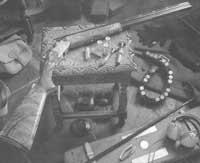
Lead accumulates in the form of galena in the soil. It is also found in the volcanic aerosols of silicate powders, in the smoke dispersed by the volcanoes of the forests, in the marine salts and in the meteorites.
The concentration of lead on the surface of continental waters is 0.5 g/l and 0.0015 g/l in marine waters. In the atmosphere there are 0.0006 g/m 3.
Artificial emissions of lead in water and soil are mainly due to the combustion of residues and metallurgical foundries.
Pigments of paints, carbonate or basic lead sulfate, the coating of lead alloys of electrical wires, and some insecticides increase the amount of lead dispersed in the medium. The main cause of air pollution is tetraetil lead which is added to fuels to make them anti-fertilizer.
Some individual human actions, such as hunting, increase the diffusion of this metal. Since each cartridge has 34 g, it would suffice for all French hunters to shoot 60 tons of lead.
It only stores 10% of the lead ingested by humans. According to the FAO (Food and Agriculture Organization) and WHO (World Health Organization), absorption of a microgram per kilo of body weight can be admitted. The higher amounts accumulate.
This heavy metal, by ingestion of excessive doses, can cause saturnism. Formerly, when the water courses were made of lead, this disease was frequent.
Adding all the spills, the total launch of lead was 332,4x10 6kg in air, 3,8x10 6kg in water and 563,5x10 6kg in ground in 1983.
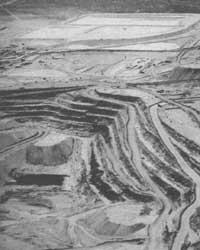
In some minerals, mercury is in a natural state. As a result of mineral cleaning, 0.5 g/l and 3 g/l of mercury are collected in the ocean's continental waters. The discharge of a volcano in an uncontaminated atmosphere can mean 0.002 ppb (part of the billion).
To these springs of the two natural spills must be added other artificial springs. In the extraction and roasting of the cinnabar mineral it is released between 2% and 3% of metal in the form of aromas or particles.
Mercury chloride or phenylmercury acetate is used as fungicide in the coatings of the seeds according to their toxicity and these bactericidal compounds are not recovered, integrating entirely into the soil. The chemical industry uses mercury and disperses to obtain chlorine or sodium by electrolysis. Also for the transformation of acetylene into vinylacetylene chloride or acetylene.
Mercury metal, thanks to its properties, is widely used in the manufacture of measuring and electrical appliances. If little is recycled, it stays in nature.
The pharmaceutical industry uses organomerkuric antiseptics and diuretics. The largest number of them targets the sewer. In France, for example, used batteries represent 93% of the mercury present in household waste.
The mineral mercury that reaches aquatic ecosystems becomes a compound of mercury by benthic bacteria. Methylmercury is the most harmful for its stability and cumulative effect.
Once collected and filtered by microorganisms, it can be stopped at sea and stored in the food chains, concentrating on the following consumers.
In seal or liver of marine dogs 140 mg of mercury/kg have been found.
According to international health standards, the allowable mercury rate in drinking water and food is 0.5 ppm (parts per million).
Adding all the spills, the total mercury spill was 3,6x10 6kg in air, 3,6x10 6kg in water and 5,8x10 6kg in soil in 1983.
It is a scarce metal. In natural state it is usually mixed with zinc and lead. Natural concentrations in rivers and seas are usually one microgram per liter. The main pollutants are mines and refineries. Also industrial waste, used urban waters, phosphate fertilizers and insecticides.
Galvanized channels or silver soldiers/cadmium alloys, rubber and tires (cadmium oxide is used to vulcanize rubber) increase the long list of superior contaminants.
In irrigated areas this element is quickly transferred to sediments and is absorbed by living beings. It is more toxic to marine life than mercury. It is mainly concentrated in liver and kidneys, but also in fish meat. They are completely sensitive to this element. The highest concentrations are found in some oysters. The proportion of cadmium they concentrate is 300,000 times higher than the environmental concentration.
The man does not remove the cadmium he ingests and this accumulation can cause effects several years after intoxication. The disease it can produce is known as Itai-Itai and usually produces bone alterations.
Adding all the spills, the cadmium was 7.6x10 6kg in air, 7.1x10 6kg in water and 16.7x10 6kg in soil in 1983.
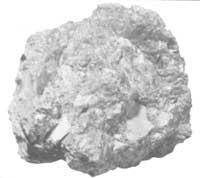
Arsenic is found in almost all natural metallic sulphides.
The average content in continental waters is 0.4 g/l and 0.5 mg/kg on land. Volcanoes account for 90% of natural shots. The rest is composed of sinks of forests and meadows and some spills of underground and thermal waters.
The human being, forming large concentrations of this element, changes the cycle. The use of arsenic compounds in pesticides contributes to the accumulation of this heavy metal in the soil in the form of insoluble salts. Sodium arseniate is widely used in vineyards as an insecticide and fungicide. This is why remains of arsenic have been found in the wine.
The burning of coal and fuel releases an important amount of arsenic into the medium. All of these compounds are toxic. Inorganic forms are the most harmful. The Irish tend to accumulate this element in their roots, but in aquatic ecosystems it is the most dangerous.
After some bacteria and yeasts became very toxic gaseous derivatives, such as dimethylartin and trimethylartin, it accumulates in marine fauna and vegetation: algae concentrate arsenic between 1000 and 10,000 times. The concentration of arsenic in fish is very important.
It absorbs 5% to 15% of the arsenic that man ingests daily (25-33 g). The admissible rate in drinking water is 0.05 mg/l.
In 1983 the sum of all arsenic shots was 18,8x10 6kg in air, 35,3x10 6kg in water and 68,8x106 kg in soil.
Chromium is quite widespread on the ground. It is mainly extracted from the mineral chromite. The natural content of chromium in water is 3 g/l and in the soil is 24 mg/kg. The main sources of contamination are the irrigation by running water of the pieces of galvanoplastica, metallurgy and steel.

These aquatic residues mainly transport chromium salts (VI) to continental waters (the most toxic for humans). Chromium is used as anticorrosive in the internal coatings of the cooling towers. It also generates hexavalent chrome casting.
The use of chromium (III) by squid to avoid corruption causes large amounts of alcohol.
Although metal itself is not harmful to humans, its hexavalent and tribal salts are harmful. So far, the greatest intoxications have been respiratory. Chromium (III) has little influence on the digestive system, but normally absorption in tissues and, in short, can be dangerous. Chromium VI causes a deterioration of the gastrointestinal tract.
The European regulation establishes an admissible chromium rate in food of 0.1 mg/kg and drinking water of 0.05 mg/l.
The sum of all chrome spills, 30.5x10 6kg in air, 132,9x10 6kg in water and 874,4x106g on land in 1983.
- This company was responsible for the tragedy that occurred in the bay of Minamata in 1954. It killed 43 Japanese people intoxicated by methyl mercury.
- An explosion in the Bhopal pesticide company caused the death of 2500 people.
- In 1986 the fire of the company Sandoz in Bali produced a lot of insecticides. The main pollutant was mercury.
Buletina
Bidali zure helbide elektronikoa eta jaso asteroko buletina zure sarrera-ontzian











